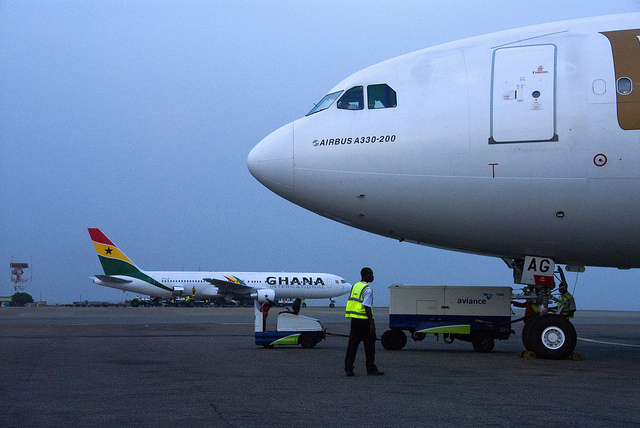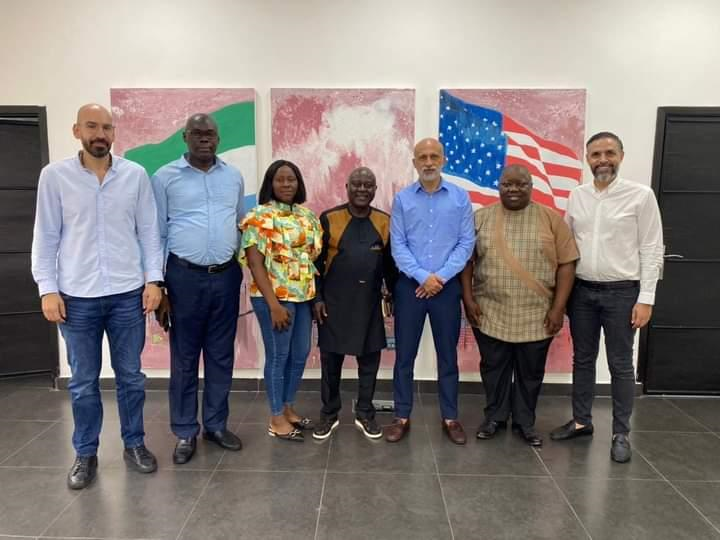Africa flies on a wing and a prayer
Until recently, it was not uncommon for passengers flying between two African cities to transit through Europe. It was cheaper and faster, for instance, for passengers travelling to Ethiopia from Cote d’Ivoire to fly first to Paris with Air France and then catch a connecting flight to Addis Ababa. With no direct flights linking their capitals, most African countries had to rely on flights from their former colonial powers to connect to each other. It still happens today but on a smaller scale; flying in Africa is improving, albeit slowly.
Yet poor safety records continue to bedevil its aviation industry, thanks to low standards, inert supervision and old and poorly maintained planes. The airports too suffer from poor maintenance and offer shoddy and expensive service, says the International Air Transport Association (IATA), the global airlines group. While revenue from airports and air traffic is probably adequate to finance essential investments, politics and weak management are interfering with how the money is used.
A Still, a major study* by a consortium of organizations led by the World Bank concluded that generally the capacity of air transport infrastructure “is not a serious problem.” The 2009 study, Africa’s Infrastructure: A Time for Transformation, said the number of airports was adequate and there were enough runways to handle traffic. It noted, however, that while African carriers are upgrading their fleets, progress with air traffic controls remains sluggish.
Poor infrastructure undoubtedly adds to huge running costs. Airports are often stuffed with high-charging monopoly suppliers, in addition to other government taxes, says IATA. For example, Senegal increased its landing charges by 13% in 2012 on top of an airport development fee of about $68 per passenger—the highest in Africa. Critics say some African countries are less transparent with how they use the money from these charges. Several other countries have development charges of up to $50 per passenger.
Brain drain amid growing staffing needs
There is little relief from airport operating costs: fuel taxes are high, so are landing and take-off charges. For example, fuel prices in Africa are on average 21% higher than the global average. Worse still, Africa has the highest airfare costs in the world per kilometre, pushed up partly by high taxes and partly by lack of competition or relatively low air traffic volumes on many routes.
Because of poor safety records, African airlines often face higher leasing costs than other carriers. According to The Economist, a European airline, for example, could be charged $180,000 a month to lease a five-year-old Boeing 737, but a Nigerian carrier could be slapped with a bill of up to $400,000.
The continent’s aviation industry further suffers from lack of skilled personnel, worsened by a brain drain that has seen pilots and technicians joining airlines with better bottom lines. Boeing, a US aircraft manufacturer, estimates that Africa will need 14,500 new pilots and 16,200 technicians through 2031, according to IATA.
“African airlines have to raise their game and their remuneration packages to retain pilots, engineers, cabin crew, and airline managers,” says Mike Higgins, IATA Regional Vice President for Africa. Ethiopian Airlines, for instance, is handling it creatively. “Instead of complaining, why don’t we train enough people not only for our airline but also for the region?” Tewolde Gebremariam, the airlines’ chief executive officer told Airlines International, an IATA publication. His airline has expanded intake at the Ethiopian Aviation Academy in Addis Ababa from 200 to 1,000 students per year.
Notwithstanding the litany of problems it is confronting, Africa’s aviation industry is beginning to pick up, boosted by the continent’s economic growth. “Nowhere is the potential for aviation greater than on the African continent,” Tony Tyler, head of IATA, told participants at the group’s annual meeting last year in Cape Town, South Africa. The aviation industry supports some 6.7 million jobs in Africa and generates $67.8 billion in economic activity, says the World Bank-led report.
Growing middle class
By 2030, more than half of Africa’s population will be living in the cities and, according to the African Development Bank, about 700 million will join the middle class over the next decades. This burgeoning middle class will produce more customers who will find it more convenient and affordable to fly than use alternative transport. More competition among low-cost airlines and increased traffic should also result in affordable airfare.
Established airlines are also making profits and flying to more destinations. Kenyan Airlines, Royal Air Maroc, South African Airlines, Ethiopian Airlines and EgyptAir stand out among the pack. Ethiopian Airlines, Africa’s fastest growing carrier, is consistently exceeding its profit targets. In August 2012, the state-owned but privately-managed airline became the second carrier outside Japan to operate the Boeing 787 Dreamliner, a state-of-the-art passenger jet. It bought ten new 787s with a $1 billion loan guarantee from the Export-Import Bank, a US export credit agency.
Africa’s economic powerhouse, South Africa, has the most developed air transport infrastructure network and aviation market in the region. Its three major airports in Johannesburg, Cape Town and Durban got face-lifts ahead of the World Cup in 2010 and its national airline, the South African Airways, is the largest in Africa, with connections to over 50 cities across the continent.
To realise their full potential, African governments have adopted a Common African Civil Aviation Policy. It aims to establish a well-integrated transport system that would link air travel to other means of transport so that passengers and cargo can move seamlessly—and avoid connecting trips outside the continent just to travel within the same region.
*Africa’s Infrastructure: A Time for Transformation by World Bank, World Bank Publications, Washington, D.C., 2009.
African seaports: upgrade or drown
If the aviation industry has been a significant player in Africa’s economy, the shipping industry has been indispensable to its development. But relatively little has changed over the past decade in Africa’s seaport infrastructure and administration. A World Bank study* grimly noted that while many ports can handle the increasing traffic from booming commodity trade, only a few are world class.
None of the five main transhipment centres, (Abidjan, Côte d’Ivoire; Dar es Salaam, Tanzania; Port of Djibouti, Djibouti Republic; Durban, South Africa; and Mombasa, Kenya) is a major hub on the main international routes, says the study. Several ports suffer from low capacity, particularly in terminal storage and maintenance. Hubs attract big shipping lines and help lower transport costs. Ghana, Kenya, Namibia, Nigeria and South Africa are among the few African countries to show progress in developing their ports.
In addition to capacity constraints, the most commonly cited reasons for bottlenecks at African ports are old and inefficient port infrastructure and administrative blockages. Port dwelling time is also a growing concern. A 2012 World Bank report found that, with the exception of Durban, cargo spent an average of 20 days in African ports, compared with three to four days at most other international ports. Other weaknesses include poor equipment, inefficient operations, weak security standards, substantially higher port charges for containers and general cargo.
Integrated rail and road links
One of the major shortcomings of shipping in Africa is the lack of integrated rail and road networks with links to service seaports. The Economist reported that it costs $4,000 to ship a car from China to Tanzania on the Indian Ocean coast, but getting it from there to nearby Uganda can cost another $5,000. “To transport one container from China to Ethiopia is almost triple the cost of sending a container from China to Brazil,” Liu Jiang, a general manager with Lifan, a Chinese automobile manufacturer, told Africa in Fact, a publication of Good Governance Africa, an advocacy group. In general, shipping goods to Africa is not expensive; it’s the inland transport costs that send the bill skyrocketing.
This lack of integrated links means that there is still relatively little containerized traffic into the hinterland, especially into the landlocked countries where most imports are transported as general cargo. Although still relatively low, container transport in sub-Saharan Africa is expanding, says the World Bank-led report.
Africa’s busiest port
Most ports in Africa are run by governments; they own and operate the infrastructure. However, some countries like Ghana and Nigeria are opting for the “landlord” model, which is the preferred option, under which governments own and maintain the port infrastructure and the private sector is left to handle cargo operations. The standards of ports vary across the region.
Africa will need huge investments in building new infrastructure, upgrading existing ones and maintaining them. The World Bank calculates the region needs an estimated $93 billion per year, or about 15% of its gross domestic product. Actual investment is currently running at $45 billion per year, with half of that coming from governments, leaving a finance gap of $48 billion. Without a reliable transport infrastructure, Africa will find it difficult to achieve its full economic potential.
*Africa’s Infrastructure: A Time for Transformation by World Bank, World Bank Publications, Washington, D.C., 2009.
By Masimba Tafirenyika, Courtesy of Africa Renewal
Stay with Sierra Express Media, for your trusted place in news!
© 2014, https:. All rights reserved.






